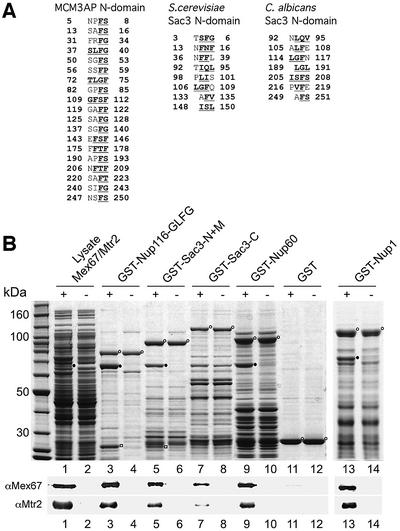Fig. 6. In vitro binding of Sac3p, Nup60p and Nup1p to Mex67p–Mtr2p. (A) The Sac3p N-domains of several Sac3p homologs contain degenerate FG repeats. Peptide sequences from the Sac3p N-domains of human, S.cerevisiae and C.albicans, which exhibit degenerate FG motifs (bold and underlined) are depicted. (B) Recombinant GST fusion proteins (indicated by open circles) of Nup116-GLFG (positive control), the Sac3p N + M- and C-domains, Nup60p and Nup1p, or GST alone were immobilized on glutathione beads and incubated with an E.coli lysate (+) containing recombinant Mex67p (closed circle) and Mtr2p (open square). As negative control, the same GST fusion proteins were incubated with an E.coli lysate lacking recombinantly expressed proteins (–). Proteins bound to the beads were eluted with SDS buffer and analyzed by SDS–PAGE and Coomassie staining (upper panel). The presence of Mex67p and Mtr2p was confirmed by western blot using antibodies specific for Mex67p and Mtr2p, respectively (lower panel).

An official website of the United States government
Here's how you know
Official websites use .gov
A
.gov website belongs to an official
government organization in the United States.
Secure .gov websites use HTTPS
A lock (
) or https:// means you've safely
connected to the .gov website. Share sensitive
information only on official, secure websites.
